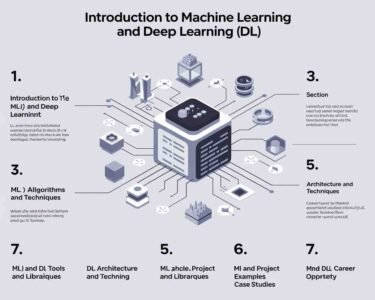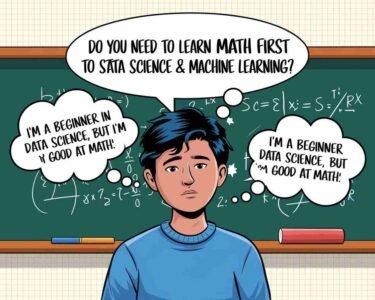Step 1: Introduction to Data Science
What is Data Science?
The field of data science involves extracting insights and knowledge from structured and unstructured data using scientific methods, algorithms, and systems.
Difference Between Data Science and Data Analytics
Data science focuses on the development of methods and algorithms to solve data-driven problems, while data analytics focuses more on interpreting existing data.
What is Business Analytics?
Business analytics is the process of transforming data into actionable insights for business decision-making.
Introduction to Business Analytics, Data Analytics, and Data Science
Explore how business analytics, data analytics, and data science are interrelated and their role in data-driven decision-making.
Step 2: Working with Traditional Data, Big Data, BI, and ML
Traditional Data vs Big Data
- Traditional data refers to structured, manageable datasets, while big data consists of large, complex datasets.
- Business Intelligence (BI) Techniques
- Business Intelligence helps in making business decisions based on historical and current data.
- Machine Learning (ML) Techniques
Machine learning involves using algorithms to learn from data and make predictions or decisions without explicit programming. - Real-Life Examples
Examples of how traditional data, BI, and machine learning are applied in real-world scenarios.
Step 3: Learning Essential Programming Languages and Tools
Necessary Programming Languages
- Python, R, SQL, and Java are commonly used in data science.
Software Used in Data Science - Tools like Jupyter Notebooks, PyCharm, TensorFlow, Hadoop, and Tableau.
Job Search
- What to expect in the job market and how to prepare for data science roles.
- Python, R, SQL, and Java are commonly used in data science.
Step 2: Probability and Statistics for Data Science
Basics of Probability
Basic Probability Formula
Understanding the foundational formula for probability.
Events and Complements
The relationship between events and their complements.
Fundamentals of Combinatorics
Learn about permutations, combinations, and their application in probability.
Probability Distributions
Types of Probability Distributions
Discrete distributions (e.g., Binomial, Poisson) and continuous distributions (e.g., Normal, Exponential).
Practical Applications
Real-life examples of using probability distributions in data science.
Step 3: Statistics for Data Science
Descriptive Statistics
Introduction to Descriptive Statistics
Summarizing data using mean, median, mode, variance, and standard deviation.
Inferential Statistics
Hypothesis Testing
Learn about the fundamentals of inferential statistics, including t-tests and chi-square tests.
Step 4: Python for Data Science
Python Basics
Python Syntax and Data Types
Master the basic syntax, variable types, and operators in Python.
Control Structures and Functions
How to use loops, conditionals, and functions for efficient programming.
Advanced Python Tools
Sequences and Iterations
Learn about lists, tuples, sets, and how to iterate through them.
Libraries for Data Science
Introduction to NumPy, Pandas, and Matplotlib for data analysis.
Step 5: Advanced Statistical Methods in Python
Linear Regression with StatsModels
The Linear Regression Model
Understanding linear regression and its applications in data science.
Correlation vs Regression
The difference between these two statistical concepts and their use cases.
Linear Regression with sklearn
What is sklearn?
A powerful library for implementing machine learning algorithms.
Simple and Multiple Linear Regression
Learn how to perform linear regression using the sklearn library.
Step 6: Mathematics for Data Science
Linear Algebra
Introduction to Matrices
Learn about the basics of matrices and their role in data science.
Matrix Operations
Addition, subtraction, dot product, and transpose of matrices.
Scalars, Vectors, and Tensors
Working with Scalars and Vectors
Understand the basics of scalars and vectors in data science applications.
Step 7: Deep Learning and Neural Networks
Introduction to Neural Networks
Building a Neural Network
Learn how to build a neural network from scratch using Python libraries like TensorFlow.
Deep Learning
Overfitting and Initialization
Understanding deep learning concepts and their role in model training.
Classifying on the MNIST Dataset
Hands-on example of deep learning applied to image classification.
Step 8: Software Integration and APIs
Data, Servers, and Clients
Understanding Data Communication
Learn about data connectivity, APIs, and software integration.
How APIs Work
Explore the role of APIs in software products, with real-world examples.
Final Steps to Becoming a Data Science Engineer
Additional Python Tools
Tools like Pandas for data manipulation and visualization.
Finding Your Job
Tips for finding a job in the data science field, preparing for interviews, and building a portfolio.




